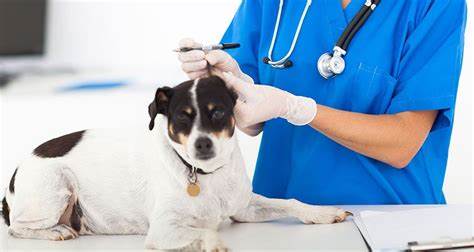Blog
The Value of Portion Control for Your Pet’s Health

Managing your dog’s food portions is an important part of keeping them healthy and preventing obesity. Continue reading to learn some tips and tactics for regulating your dog’s food consumption and keeping them at a healthy weight. Overfeeding your dog can result in a range of health problems, including diabetes, joint difficulties, and even a shorter lifespan.
A Guide to Dog Food Measurement
Measuring your dog’s food is the first step in keeping their health and preventing obesity. Here are some tips for properly measuring your dog’s food:
Review feeding guidelines:
Many pet food packages provide feeding guidelines that give an indication of how much food your dog needs. However, when choosing your dog’s meal quantities, you must consider its weight, age, and activity level.
Apply the following general rule:
As a general guideline, feed your dog 2-3% of their body weight per day. This can be used as a starting point for calculating your dog’s daily food needs.
Determine daily food requirements:
Once you’ve estimated your daily needs for food, you can measure out the right portion at each meal.
Invest in a kitchen scale:
To correctly measure food servings, use a kitchen scale. Pets Petz will assist you in ensuring that you are feeding your dog the appropriate amount of food.
Maintain and adjust:
Keep records of your dog’s food quantities and weight. To stay at a healthy weight, adjust your food portions as needed. Remember that each dog is unique and may have varied nutritional requirements.
Use a formula:
A simple formula can be used to establish your dog’s daily food requirements: (Weight in pounds) multiplied by (2-3%) equals daily food requirements in cups or ounces.
Considerations for determining portion size
Maintaining a cat’s health entails many of the same considerations as with people. You should live a long and fruitful life if you refrain from consuming more calories than you burn, stay active, and drink lots of water.
The same can be said for our feline companions.
It is our responsibility as pet owners to ensure that we feed our cats the appropriate sort and amount of food for their lifestyle.
- Kittens and younger cats are far more active than senior cats. That means they’ll require extra calories.
- The more alert your cat is, the more calories he or she will burn. Cats who are more active will require more food to refill.
- Smaller cats have smaller stomachs and should eat fewer food items. Your portion control is correct if your cat has a healthy weight. If your cat is overweight, servings should be reduced slightly.
- Overall health – Weight loss or gain can be caused by underlying disorders. If your cat has underlying conditions that could cause problems with your calorie-control efforts, consult with a vet.
- Neutered or not – Spayed or neutered cats may eat less, but they are also more likely to be overweight. Breeding cats should have unlimited food available to increase their chances of a healthy pregnancy.
Conclusion:
The calorific content of cat food appears on the side of the packet. It’ll usually be split down into kcal/portion weight. So you may have to perform some weighing until you determine exactly how much to serve your cat.
-
Blog1 year ago
MyCSULB: Login to CSULB Student and Employee Portal – MyCSULB 2023
-
Android App3 years ago
Cqatest App What is It
-
Android1 year ago
What Is content://com.android.browser.home/ All About in 2023? Set Up content com android browser home
-
Software2 years ago
A Guide For Better Cybersecurity & Data Protection For Your Devices
-
Latest News2 years ago
Soap2day Similar Sites And Alternatives To Watch Free Movies
-
Android2 years ago
What is OMACP And How To Remove It? Easy Guide OMACP 2022
-
Android3 years ago
What is org.codeaurora.snapcam?
-
Business2 years ago
Know Your Business (KYB) Process – Critical Component For Partnerships





















